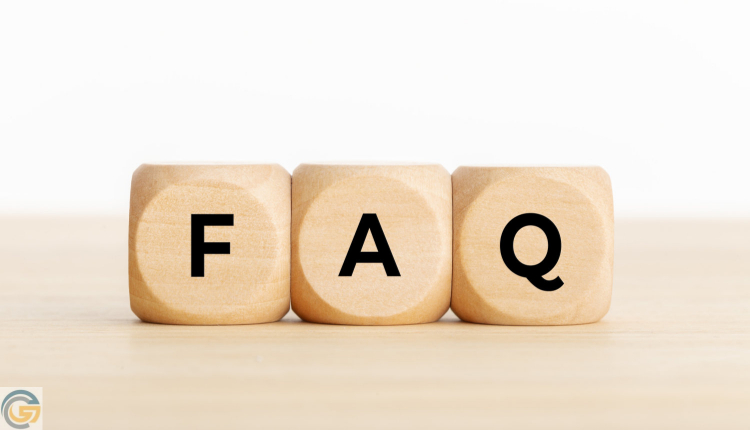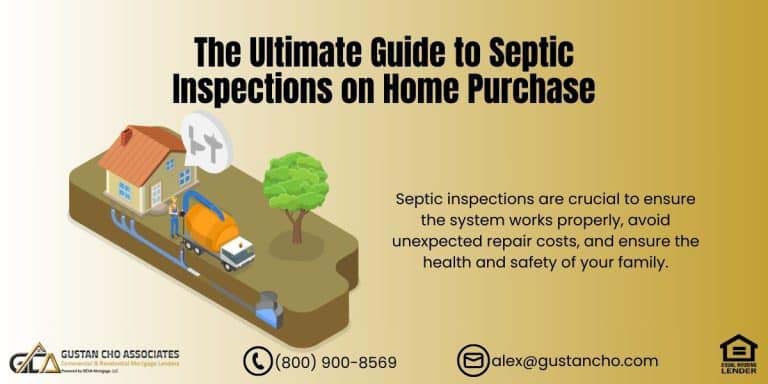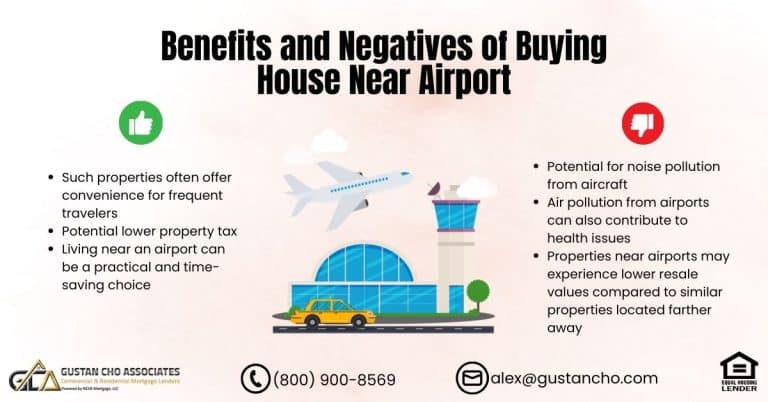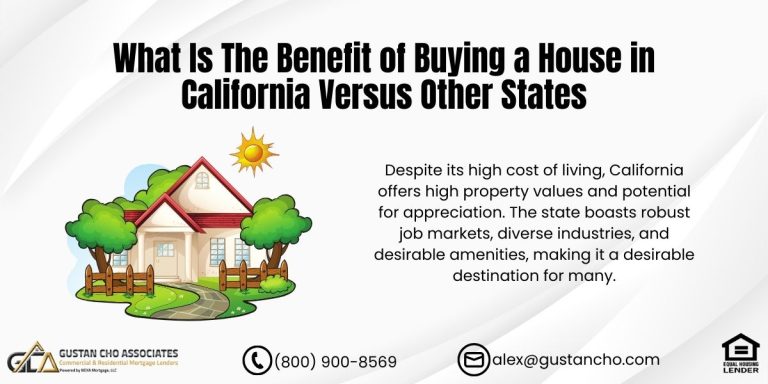In this blog, we will cover and discuss FAQ mortgage questions from borrowers on home purchase and refinance. Most people only buy or refinance a home a few times during their lives. Dale Elenteny, a senior mortgage loan originator at Gustan Cho Associates says the following about FAQ mortgage questions:
While in the mortgage industry, the rules change all the time. This means few homebuyers and homeowners are familiar with the mortgage process or understand the current guidelines.
We at Gustan Cho Associates specialize in helping first-time homebuyers get into their first homes. We also work with borrowers who have unusual circumstances or credit problems. There are a few scenarios we have not seen or problems that we have not solved. We’re here to answer your top mortgage questions now.
FAQ Mortgage Questions: How Much Down Payment Do I Need for a Mortgage?
One of the costs for homebuyers is the down payment requirements on a home purchase. Many homebuyers’ biggest issues are coming up with the down payment and closing costs. Dale Elenteny, a senior mortgage loan originator at Gustan Cho Associates says the following about FAQ mortgage questions:
Closing costs can normally be covered with seller concessions from the seller and/or a lender credit from the lender. Down payment requirements depend on the type of mortgage you need, the property use, your qualifications, and the loan size.
In the following paragraphs, we will cover the most common FAQ mortgage questions: From the minimum down payment requirements, to the minimum credit score requirements, to the maximum debt-to-income ratio caps, and the various mortgage loan options for homebuyers.
Got Mortgage Questions? We’ve Got Answers
From buying your first home to refinancing, we’ll clear the confusion.
Down Payment on Home Purchase with VA Mortgages
VA and USDA loans are the only two mortgage loan programs that do not require down payments. Lenders will finance 100% of the purchase price on VA loans. VA home loans are for eligible active and/or retired service members and surviving spouses of eligible veterans. The down payment requirement for VA financing is zero. However, you pay a smaller funding fee if you put at least 5% down.
VA Loan Limit on VA Loans
The VA does not set a maximum loan amount. However, it does limit the amount that it will guarantee. Because of that limit, most VA lenders will only allow 100% financing up to a certain limit. In 2025, that limit in most parts of the country is $806,500. It’s higher in more expensive parts of the country. The maximum conforming loan limit is high cost areas is $1,209,750 for 2025.
If you exceed that limit, you can still apply for a VA loan. But you’ll need a down payment of 25% of the amount over the limit. If your purchase price is $906,500, is ($100,000 over the limit), you were required to put a $25,000 down payment (25% of $100,000).
However, on January 1st, 2020, VA loans no longer had a maximum loan limit. You can qualify for a VA loan on higher-end homes as long as you can get an approve/eligible per automated underwriting system (AUS) or meet the VA manual underwriting guidelines.
VA Mortgage Calculator With DTI and Funding Fee
USDA Mortgage Down Payment
USDA mortgages for rural properties provide 100% financing with zero down. Eligible properties are outside major population centers and eligible borrowers earn very low to moderate-income. You can check your property eligibility on this interactive USDA property eligibility map. You can verify your income eligibility on this interactive HUD income eligibility worksheet.
Fannie Mae or Freddie Mac 97% down payment
Fannie Mae and Freddie Mac both offer mortgages with just 3% down. Manufactured homes and multi-unit properties are not eligible. For 97% financing, at least one borrower must be a first-timer, or the borrowers must be eligible for HomePossible or HomeReady programs.
HUD Minimum Down Payment Requirement on FHA Loans
FHA home loans allow 3.5% down payments for applicants with FICO scores of 580 or higher. HUD allows borrowers with credit scores down to 500 FICO to be eligible for FHA loans. Per HUD agency mortgage guidelines, a 10% down for those with FICO scores between 500 and 579. However, applicants with credit scores at the low end of those ranges may have to put more money down to get loan approval.
FAQ Mortgage Questions on Conforming mortgage down payment
Conforming home loans meet guidelines established by Fannie Mae or Freddie Mac. They are the most popular mortgage programs in the US. Borrowers who are ineligible for 97% financing can apply for 95% financing with private mortgage insurance (PMI). This is for a primary residence. The minimum down payment for a second home is 10%. The minimum down payment for an investment property is 20%.
FAQ Mortgage Questions on Jumbo home loan down payment
Jumbo mortgages are conventional (not government-backed) home loans with loan amounts that exceed what’s allowed for conforming loans by Fannie Mae and Freddie Mac. Lenders also call them non-conforming loans.
The minimum down payment for a jumbo mortgage as of this writing is as low as 10% for some lenders but 10% for most. Very large loans called “superjumbo” mortgages have higher minimum down payments.
In general, the larger the loan, the higher your down payment. If you want a $5 million dollar mortgage, for instance, you may have to put 40% or more down.
FAQ Mortgage Questions on Non-QM loan down payment
Non-QM loans may also be called portfolio loans or non-prime loans. Lenders create these products and can make up their own guidelines as long as they follow consumer protection laws. Minimum down payments for these loans can range from zero to 50%. It depends on the product and the borrower’s qualifications.
Home Purchase or Refinance—Know the Facts
Get simple, clear answers to the most asked mortgage questions.
FAQ Mortgage Questions on What Is a Debt to Income Ratio?
When you apply for a mortgage, you’ll hear the term debt-to-income (DTI) ratio a lot. DTI is the relationship between your income and your debts. It’s equal to your total monthly debt payments divided by your gross (before tax) monthly income.
How do I calculate my debt-to-income ratio?
You do not include all of your monthly expenses in your DTI.
- Add up your minimum credit card payments, payments for installment accounts like personal loans, IRS payment plans, vehicle loans, and student loans.
- Add the new mortgage payment, including property taxes, homeowners insurance, and HOA dues (if applicable) to get a total of your expenses.
- Don’t include food, utilities, childcare, etc.
- Add up all sources of income.
- For employment income, use the gross (before tax) amount, not the net.
- Divide the debts by the income.
Suppose your expenses include a $300 monthly car payment and $200 in credit card payments. If your new mortgage payment including taxes and insurance would be $1,500 a month, your total expenses are $2,000 per month. If your gross income is $5,000 per month, your DTI is 40%.
That’s $2,000 / $5,000 = .40, which is 40%.
The Best Mortgage Calculator with DTI by Gustan Cho Associates
What is a good DTI for a home loan?
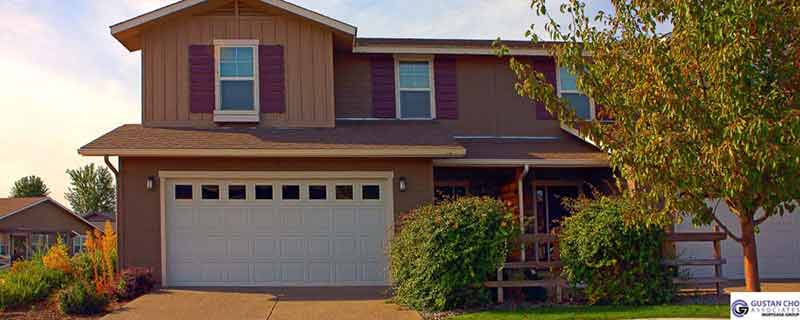
Mortgage lenders don’t want to see your DTI go too high because it means you probably cannot afford the mortgage. Very conservative programs might set the limit as low as 36%. The most common limit, however, is 43%. And flexible programs like FHA allow DTIs as high as 57% if the borrower is otherwise highly qualified.
The Best DTI Mortgage Calculator Powered by Gustan Cho Associates
How do I calculate DTI when applying for a second home?
When calculating a DTI for a second home application, you’ll add your monthly payment including taxes and insurance for the new home, the monthly payment for your current home, and all of your other monthly account payments to get your total debts. Divide that by your gross monthly income.
Try Our Mortgage Calculator With DTI and PMI
How do I calculate DTI when applying for an investment property loan?
You calculate your DTI for an investment property loan the same way you do the DTI for a second home. However, you’d add 75% of the rental income (or potential rental income) to your gross monthly income.
How Do Lenders Set My Mortgage Rate?
Several factors determine the mortgage rate a lender offers you.
- The economy and bond prices
- The lender’s business model and policies
- The type of loan you choose
- Your characteristics as a borrower
- The property type, location, and use
You can control some of these factors but not all of them.
Economy
Interest rates, including mortgage rates, depending on the economy. When the economy is booming, investors worry about inflation and demand higher returns on their investments, including mortgages. A higher return is another way of saying “higher interest rates.” When the economy is shaky, investors just want safe investments and are willing to accept a lower return or interest rate.
Gustan Cho Associates Calculator
Lender
Some lenders are more efficient than others and can offer lower rates. But they may only lend to perfect borrowers or only offer a few programs. And any lender will raise its rates when it gets very busy. That helps it reduce the number of applications coming in to a level it can manage. So a lender that’s the cheapest one week might be expensive another week. It pays to compare.
Loan
The loan type affects your mortgage rate as well. A 30-year fixed loan will have a higher rate than a 15-year fixed loan because it’s less risky for the lender.
An adjustable-rate mortgage (ARM) can offer a low introductory rate because the rate can increase once the introductory period expires.
The loan amount matters, too. Very low loan amounts can carry surcharges so the lender doesn’t lose money by doing them. And loans with unusual underwriting guidelines like bank statement loans usually come with higher interest rates.
Best Mortgage Calculator Powered By Alex Carlucci of Gustan Cho Associates
Borrower
The borrower’s qualifications are very important when determining a mortgage rate. The higher your credit score, the lower your rate. Higher down payments also help qualify homebuyers for lower mortgage rates.
Property
The property can influence your mortgage rate as well. Some properties like multifamily, condominiums, and manufactured housing are riskier to finance. So they can cost more to finance.
The use of the property matters as well, Primary residences get the lowest rates, second home rates are a little higher and rates for rental houses are higher still.
You can’t control the economy, but you can improve your own profile by increasing your credit score or making a higher down payment. And it’s always a good idea to compare mortgage rates among lenders before signing on the bottom line.
What Are Origination Points?
Mortgage points are fees that you might pay to get a home loan or to get a home loan with a lower interest rate. One point is equal to 1% of the loan amount. There are two kinds of points. The first type is an origination point.
Many lenders charge origination points instead of a list of individual charges like underwriting fees, processing fees, courier fees, etc.
The origination fee is often one point, but it can be any amount, including fractions of points. You might be offered a loan costing .5 points, for example.
FAQ Mortgage Questions on What Are Discount Points?
The other type of point is the discount point. Discount points allow you to get an interest rate that’s lower than the current market rate. For instance, you might be offered a 30-year fixed loan with one origination point at a rate of 3.125%. Or you could choose to pay one point and lower your interest rate to 2.875%. Mortgage lenders call this buying down your mortgage rate.
FAQ Mortgage Questions on What’s the Point in Paying Discount Points
So, what’s the point of paying points? By buying your rate down, you get a lower monthly payment. That may help you qualify to borrow a larger amount. However, it takes time to get back the money you pay upfront with monthly savings from a lower payment. Unless you know that you will have your mortgage long enough to recoup the cost of paying points, it’s probably best to spend as little as possible upfront to get your mortgage.
FAQ Mortgage Questions on Adjustable Rate Mortgages (ARMs)
Adjustable Rate Mortgages, or ARMs, are not that popular when mortgage rates are low. However, when rates climb, homebuyers become interested in ARMs again.
An ARM is a mortgage with an interest rate that can change over time. It can rise or fall as the economy changes, and when the interest rate changes, so do your payment.
ARMs all have an introductory period in which their interest rates are lower than those of 30-year fixed mortgages. The rate is temporarily fixed at this lower rate for a period ranging from six months to ten years. The most popular ARM has an interest rate that’s fixed for five years.
FAQ Mortgage Questions on How do ARMs work?
ARM mortgages have several moving parts: the start rate, the index, and the margin. The start rate is the rate you get for the introductory period of your loan. For instance, you might see a 5-year ARM with a start rate of 2%.
The index is a published measurement of financial activity. There are many, but the most popular is the London Interbank Offered Rate (LIBOR), the Constant Maturity Treasury (CMT), and the 12-month Treasury Average (MTA).
You can find them online every day or in the financial section of most newspapers. The index moves as the economy changes, and your lender does not control it.
FAQ Mortgage Questions on What is the Margin on Adjustable Rate Mortgages
The margin is a percentage that the lender adds to the index to cover its costs and build in some profit. The margin is something that you and the lender negotiate. At the end of your introductory period, your ARM can begin adjusting.
Your new rate is called the fully-indexed rate and it’s the value of the index plus the margin. Suppose that you have a 5-year LIBOR ARM adjusting today (6/8/2021). In that case, your index is .25%.
If your margin is 2%, your new rate would be 2.25%. If your loan adjusts every year, you’ll have this rate for 12 months and then it can adjust again.
What Are Caps and Floors on Adjustable Rate Mortgages
Your ARM will also have caps and floors. Caps limit how much your rate can increase at any single adjustment and also how high it can go over the life of the loan.
Common lifetime caps are 5% or 6%, and common adjustment caps are 1% or 2%. Floors limit how low your interest rate can go. If your rate floor was 3%, for instance, that would be the lowest rate you’d get, even if your fully-indexed rate is lower.
The main reason to choose an ARM is to get a lower interest rate. You can avoid the risk of an ARM by choosing one with an introductory period that’s close to the length of time that you expect to keep your home.
Fixed-Rate Mortgages: 15-Year vs 30-Year
What’s better? A 15-year loan or a 30-year loan? That depends. Each loan has pros and cons. 15-year mortgage pros:
- The shorter-term means that you will pay off your home in half the time and pay much less interest.
- Even though the term is half as long, your payment is not twice as high.
- The 15-year loan comes with an interest rate that’s about .5%to 1% lower than that of a 30-year mortgage.
- Mortgage insurance for a 15-year home loan is cheaper.
15-year mortgage cons:
- The payment is higher. That’s pretty much it.
With a 30-year loan, you can choose to make a higher 15-year payment. This allows you to pay off your home in half the time and save on the interest expense. And if you have a money crunch, you can choose to make the lower 30-year payment without penalty. However, that flexibility does come at a price — the higher interest rate you pay for a 30-year loan.
Changing Terms of Mortgage When Refinancing
When refinancing, if you have been paying on a 30-year loan for some time, you may be able to get yourself into a 15-year loan and pay less interest without increasing your payment by much (or at all). And shortening your total repayment period can save you a great deal of money over the life of your loan.
Confused About Mortgages? You’re Not Alone
Our FAQ guide makes the home loan process easy to understand.
Should I Pay Off My Mortgage Early?
Prepaying your mortgage can save you on interest over the life of your loan and zero out your mortgage faster. But not everyone should pay off their mortgage early.
Early mortgage payoff cons
By paying off your mortgage early, you lose the opportunity to earn money on investments with higher returns than your mortgage interest rate. Historically, stocks have averaged returns somewhere in the neighborhood of 10% per year, while mortgage rates today are closer to 3%.
You might also get yourself in a bind if you put all of your extra money into early mortgage payoff. What if you suddenly need the money that you sent your lender to prepay your home loan? It’s not like your lender will return it.
At best, you’ll have to apply and pay for a home equity loan, which carries costs, interest expense, and inconvenience; at worst, you won’t be able to get a loan and may end up having to sell your home. Finally, don’t start sending extra money to your lender if you still owe higher-interest debt like credit cards or if you have not fully funded your retirement savings. That would be a costly decision.
How to prepay your mortgage
While some companies sell early payoff services, many of them are scams. And there is nothing that even a legitimate company can do that you can’t easily do yourself.
Pay every two weeks:
- You can do this yourself by transferring half a month’s mortgage payment every two weeks into a checking or savings account (preferably interest-bearing). Pay your mortgage from that account once a month; the lender will usually require that the payment be automatically debited. Some lenders will set this up for you for just a small fee.
Make extra principal payments:
- Another method is to look at your amortization schedule to see how much of your payment is allocated to interest, and how much goes toward paying down the principal. You can do this easily with an online mortgage amortization calculator.
You’ll notice that in the beginning, your payments are almost all interest. Over time, the amount of your monthly payment that goes toward interest decreases, while the amount that goes toward principal increases.
You can pay the loan off in half the time by doubling your principal payment each month. The advantage of this method is that your payment increases gradually over time – and hopefully, your income does as well.
Since this is can be a costly strategy, it’s worth noting that any size prepayment will help to shorten your term. Even $50 extra each month will save several thousand dollars in interest.
Refinance to a shorter-term:
- This is the only method that can get you a lower interest rate. By refinancing to a 15-year mortgage, you are eligible for a lower mortgage rate, typically a half-point or lower than a comparable 30-year mortgage rate.
What Happens at a Mortgage Loan Closing?
Once your mortgage lender approves your purchase or refinance loan, you will be cleared to close. You’ll set up an appointment with your title company, or in some states with an attorney.
You will sit down with an escrow officer or lawyer and sign the legally-binding documents that obligate you to a mortgage. If you’re purchasing a home, the documents will also transfer the ownership of the property to you from the seller.
You’ll review your final loan documents and settlement statement. It’s best, if you can, to get a copy of those documents a few days beforehand so you can look through them slowly and without pressure.
FAQ Mortgage Questions on Closing
Ask your lender or real estate agent to clear up anything you don’t understand. Your final HUD-1 settlement statement should essentially match the most recent Loan Estimate form from your lender. Double-check the loan type, loan amount, interest rate, and payment to make sure everything is in order.
If you need to bring in down payment and closing costs, you’ll have your bank execute an electronic transfer or bring a cashier’s check for the correct amount to your closing.
The title officer will see that everyone — lender, seller, real estate agent, etc. — is paid what they are owed. The title officer records the new mortgage and (if applicable) the change in ownership with the county.
From Application to Closing
Whether you’re buying or refinancing, we’ll guide you every step.
Home Insurance Requirements for a Mortgage
Mortgage lenders require homeowners insurance to protect their interest in your property. They need to know that if your home burns to the ground they will not be stuck with a worthless house and an unpaid loan. Lenders require borrowers to provide a declaration sheet from the insurer proving that there is adequate coverage. Minimum standards are:
- The coverage must protect against loss or damage from fire, windstorm, hurricane, hail, and other hazards covered by the standard extended coverage endorsement.
- If the property insurance policy includes such limitations and exclusions, the borrower must obtain a separate policy or endorsement from another insurer that provides adequate coverage for the limited or excluded peril.
- The coverage must provide for claims to be settled on a replacement cost basis.
If the home is in a flood zone, you’ll also need flood insurance coverage. Your lender will tell you if you do.
Gustan Cho Associates Mortgage Calculator
What Are the Pros and Cons of a VA Mortgage?
VA home loans are an earned benefit for eligible servicemembers and veterans. They are guaranteed by the government, which reduces the risk to lenders and keeps mortgage costs low for the borrowers.
- You can finance 100% of a property with a VA loan.
- No down payment is required.
- There is no mortgage insurance.
- Just a funding fee, which can be wrapped into the loan amount.
- VA home loans are assumable, which can help you sell the home in the future.
- VA underwriting is very forgiving.
- There are no official minimum credit scores, although many lenders do have minimums.
There are a couple of cons to VA home loans.
- If you have a 20% down payment, you can save money with a conventional (non-government) loan because you’d have no mortgage insurance or funding fee.
- The VA does not allow loans for second homes or rental properties.
- VA loans do not allow non-occupant co-borrowers
- Only married spouses of the eligible veteran can be a co-borrower
VA Mortgage Calculator with Funding Fee Calculations
How Do I Find the Best Mortgage Lender?
It’s smart to interview a mortgage lender before making any commitments. You want to make sure that your lender offers the products you want and has the expertise that you need. Here’s what to look for when choosing a mortgage lender.
1. They call you back
Your lender should return your messages right away. And he or she should communicate in a way that’s comfortable for you. You don’t want someone who insists on calling you at work when you prefer texts. And avoid someone who goes AWOL when you need answers or a tone-deaf loan officer who drowns you in unnecessary status updates.
2. They want information
A great mortgage lender doesn’t just take your order. Good loan officers ask questions about your credit rating, your time frame, and your priorities (lower interest rate, lower payment, minimal out-of-pocket costs, faster payoff, etc.) You should feel comfortable asking questions about the program and the process, and discussing potential problems like credit issues or coming up with your down payment.
3. They have product knowledge
Your loan officer should be able to recommend products and tell you why a particular loan is right for you. He or she should explain the required disclosures in plain English. If he or she doesn’t understand them well enough to avoid jargon, find someone else. And check out the licensing information with the Nationwide Multistate Licensing System & Registry (NMLS). Look for mortgage lenders in your state that are licensed, with no disciplinary actions on file, and possess at least a few years of experience.
4. They solve problems
A great lender stays on top of your file and completes every process on time. That includes your appraisal, inspections, flood certification, prequalification, preapproval, and closing. Your lender should stay on top of requests from the underwriter and keep you in the loop. If something comes up in underwriting, a great lender can help you navigate it with a letter of explanation or a change in the program.
Calculate How Much Home You Can Afford
What Are Lender Overlays?
You hear about lender overlays on this site a lot. That’s because most lenders have them, even if we at Gustan Cho Associates do not.
All major mortgage programs like Fannie Mae, Freddie Mac, FHA, VA, and USDA have official guidelines from the companies or government agencies that created them.
However, mortgage lenders can add decide to underwrite more strictly if they choose. For instance, the FHA allows lenders to approve mortgages with credit scores as low as 580 with 3.5% down and 500 with 10% down. But almost no lenders approve loans with those scores. Many set their minimum credit score at 620 or even higher.
FAQ Mortgage Questions on Debt-to-Income Ratios
Debt-to-income ratio, or DTI, is another common overlay. The FHA loan allows a DTI as high as 57% but lenders might set their maximum at 50% or even 43%. Why would a lender set tougher guidelines than necessary?
Doesn’t that mean they will do fewer loans and make less money? There is some truth in that, but many lenders are very protective of their approval to originate FHA or VA, or Fannie Mae loans and they don’t want to risk losing it by having too many defaults.
They manage this risk by imposing higher standards. If you are worried about being denied due to a lender overlay, ask lenders if they have them and what their minimum standards are before you apply for a home loan. Or just apply with a lender like Gustan Cho Associates that do not have them.
Calculate Your Debt-to-Income Ratio
What Are Common Mortgage Mistakes?
There are several common mistakes that cause borrowers to lose their mortgage approval or to pay more than necessary for their home loan. If you are shopping for a mortgage loan with several lenders, do not give them your social security number or allow them to pull your credit report.
While credit reporting agencies wrap all mortgage inquiries into one if done within a short period of time, different scoring models have different time periods ranging from a week to a month.
Too many credit inquiries drop your credit score and that can cost you approval. Prior to submitting a loan application, talk to and interview the loan officer and make sure you are comfortable with him or her. Shop and compare mortgage rates from several providers before committing to a lender.
Save Time, Avoid Mistakes
Learn the answers before you apply for your next mortgage.
FAQ Answers on Home Purchase and Refinance Mortgages
Buying a home or refinancing your mortgage can feel overwhelming if you’ve never done it before. Most borrowers have many questions about how mortgages work, how many documents they’ll need, and the best ways to score a favorable rate. We’ve up the most frequently asked mortgage questions about buying a house and refinancing to keep it easy. Whether you’re a first-time buyer or a current homeowner wanting a lower monthly payment, this article will give you the answers you need without the jargon.
Understanding Mortgage Basics
What is a Mortgage?
A mortgage is a loan from a bank or a mortgage company to buy a house or refinance one you already have. You promise to pay the loan back, plus interest, over a specific period of 15, 20, or 30 years.
What’s The Difference Between a Home Purchase and a Refinance Mortgage?
A home purchase mortgage gives you the money to buy a new property. A refinance mortgage replaces your current mortgage with a new one. It is usually taken to lower your interest rate, change how many years you’ll pay the loan, or access money you’ve built up in your home, also called home equity.
FAQ: Key Mortgage Questions People Ask Before Buying a Home
How Much of a Down Payment Do I Really Need?
For many conventional loans, a down payment of 3% is common. If you qualify, FHA loans allow just 3.5% down, while VA and USDA loans often require no down payment.
What Score Should My Credit Report Show?
Scores differ by loan. Conventional loans usually ask for at least 620. A score as low as 500 for FHA can qualify if you put more money down. VA and USDA are a bit looser—though lenders often prefer a score of 580.
What Paperwork Do I Need For the Mortgage?
To start, lenders want your most recent pay stubs, W-2 forms or tax filings, a couple of bank statements, ID, and a list of debts and any large assets. If you’re self-employed, you should also bring your business profit-and-loss statements.
How Much Can I Really Spend on a House?
That answer is personal. Lenders look at your income, monthly debts, credit score, and loan type. They set a limit based on the debt-to-income ratio (DTI), which helps them determine how much house you can afford.
What Fees Come Up When You Close on a House?
Closing costs usually fall between 2% and 5% of your loan amount. This batch of fees covers things like bank charges, title insurance, the home appraisal, and items you prep in advance—such as property taxes and homeowners’ insurance.
Your Mortgage Refinance Questions, Answered
Why Should I Refinance My Mortgage?
Homeowners refinance when they want a lower interest rate, a smaller monthly payment, the certainty of a fixed rate instead of a moving one, a shorter loan term, or the chance to cash out some of their home’s equity.
When Can I Refinance After I Buy My Home?
Most banks ask for a waiting period of six months. If you’re looking for cash-out refinance money, they usually want you to own the home for at least 12 months.
Will I Need a Home Appraisal to Refinance?
Typically, yes. Lenders look to confirm your home’s current value. Still, some special programs—like FHA Streamline or VA IRRRL refinances—can skip the appraisal step.
Will Refinancing Damage My Credit Score?
Your score might dip slightly when the lender checks your credit, but this drop usually bounces back quickly. If refinancing lowers your monthly payments, this can help your score in the long run by lowering your total debts on file.
What Are The Costs of Refinancing?
When refinancing, expect closing costs similar to when you first bought the house. This usually ranges from 2% to 5% of the new loan amount. Some lenders advertise “no-closing-cost” options, which either tack the fees onto the new loan balance or raise the interest rate slightly.
Tips for First-Time Homebuyers and Refinancers
How Do I Get the Best Mortgage Rate?
To lock in the best rate, focus on boosting your credit score, save for a bigger down payment, compare quotes from several lenders, and explore different loan programs, like fixed, adjustable, or FHA.
Should I Use a Mortgage Broker or a Bank?
A mortgage broker compares offers from various lenders, searching for the best terms for you. Banks and credit unions usually only pitch their own loans, and brokers sometimes have access to niche programs and better rates.
What Happens if My Loan is Denied?
If your mortgage is turned down, breathe. Request the lender’s reason, then look at different loan programs. Sometimes, a quick credit score boost, reducing debts, or shopping with a new lender can turn a no into a yes.
Still Have Questions?
Every borrower’s situation is unique. Get answers tailored to you.
Final Thoughts
Getting a mortgage doesn’t have to feel overwhelming. Knowing the most asked mortgage questions lets you move toward buying or refinancing your home with certainty. Each borrower’s path is unique, so the best next step is a conversation with an experienced loan officer. They will help you review your situation and choose the option that fits you best.
FAQ Section
Can I Buy a House With Bad Credit?
Yes. Programs like FHA, VA, and some non-QM loans focus on helping buyers with lower credit scores.
What is Private Mortgage Insurance (PMI)?
PMI kicks in on conventional loans when your down payment is less than 20 percent. It protects the lender in case of default.
Can I Refinance if I’m Behind on My Mortgage?
Though options may be tough, government programs sometimes allow struggling homeowners to refinance and lower their monthly payments.
How Long Does The Mortgage Process Take?
It usually takes 21 to 45 days, depending on the loan type and how quickly you submit your documentation.
What is The Difference Between Pre-Approval and Pre-Qualification?
Pre-qualification gives a rough estimate based on the information you provide. Pre-approval means lenders look at your income, credit, and assets, which gives you stronger buying power.
Can I Refinance Without Showing My Income?
Some non-QM loans, like bank statement and asset-based loans, let you refinance without using W-2 documents.
Do I Have to Stick With My Current Mortgage Company?
Not at all! You can compare offers and choose any lender with the best deal.
Is it Worth Refinancing if Rates Drop Only a Little?
Yes, if the savings are more than the costs. A tiny rate drop can save you thousands over the life of the loan.
Can I Switch From an FHA Loan to a Conventional Loan?
Definitely! Many borrowers do this to drop the FHA mortgage insurance premium (MIP).
What if Interest Rates Fall After I Lock in My Loan?
Some lenders provide a “float-down” option. This lets you lower your rate if the market dips before your loan closes. Got mortgage questions? Our FAQ guide has the answers for buying or refinancing a home. Discover what down payment you need, how your credit score counts, and why refinancing might save you money. We break down closing costs and share tips for landing the best interest rate. From first-time buyers to seasoned homeowners, everything is explained in easy language. Learn what papers you’ll collect, how to qualify, and simple steps to lower your loan costs.
FAQ Mortgage Questions on Mortgage Options After Loan Denial
Applying for an FHA loan with your local bank and getting denied does not mean you do not qualify for an FHA loan. Do not give up! Don’t change anything about your profile during the mortgage process. Do not apply for new credit, increase your credit balances, make a large purchase, change jobs or change the source of your down payment unless absolutely necessary. For borrowers with credit issues, lower credit scores, prior outstanding collections, charge-offs, and higher debt to income ratios, Google FHA LENDERS WITH NO OVERLAYS and will find a list of lenders who do not have any lender overlays.
Credit, Income, Down Payment—We Cover It All
Our FAQs guide you through what really matters in qualifying.


